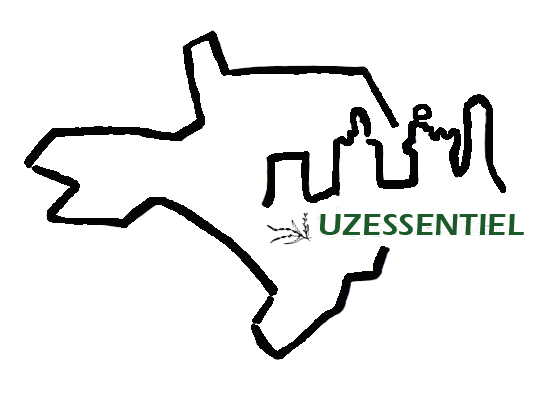A walk at Gallargues-le-Montueux
At about 50 kms from Uzès and only 8 from Lunel, Gallargues-le-Montueux is a refreshing place in plain summer due the proximity of the Vidourle river.

|
The river Vidourle, whose source springs just above Saint-Hippolyte du Fort in Saint-Roman-de-Codières, covers more than 95km before flowing into the Mediterranean at Grau-du-Roi. Starting in the Cévennes Piedmont, the river crosses the Gard before reaching the Camargue coast.
But did you know that... In the 1960s, its course was altered at its mouth. Originally flowing into the Golden pont (étang de l'Or), it now feeds the West pond (Etang du Ponant).
|

Gallargues-le-Montueux's proximity to the cities Avignon, Nîmes and Narbonne via the TER (regional express train) makes it a quite attractive location for both residents and businesses, who find it an ideal place to set up.
The town's motto? Stronger than rock.
The coat of arms: Gules, a golden rooster, on a chief couched stitched with azure, three golden chess pieces...

Starting at the Coudoulié square (coudoulié comes from codelié, referring to the large pebbles used to pave the streets), where the town hall is located, the walk can begin. A stone's throw away, the church (1813 (French National Heritage in 2015), adjoins the walls of the former 18th-century castle, and stands just a few steps from the war memorial (1928, French National Heritage since 2018).
Behind the temple, the Royal tower or Roman Tower (French National Heritage since 1875) is a medieval tower that dominates the entire city. Its origins go way back to the 13th century, when it was part of the castle. Because of its high stature, it was used from 1832 as a telegraph relay station for Claude Chappe's optical telegraph (Claude Chappe who is the inventor of the semaphore, created this method of communicating information at a distance that was faster than any previously used" wikipedia), taking "part of a wide communications network that covered some 5,000 km, connected 500 stations and was used for military and then civilian purposes" (Bernard Atger, patrimoine gallardois, 2014).
For the church of Saint-Martin, last rebuilt in the 17th century, it was part of a former priory founded in 1027 (French National Heritage since 1986).
A tasty visit to the BARRE CLANDESTINE chocolate manufacture
Heading towards the road that leads to the Roman bridge, also known as the Ambroix bridge (French National Heritage since 1840), you pass right by the BARRE CLANDESTINE chocolate factory (read our paper), one of the 2% of Bean to Bar chocolate factories in France, a concept "popularised in the United States in the 2000s".

So how could you resist a guided tour led by Emilie or Emmanuel, founders of the micro-chocolate factory, or Stéphanie, the team's pastry chef and chocolatier?
From the cocoa producers, the selection of the pods and beans to processing the product.... From sorting to roasting and hulling, we gradually arrive at the crushing of the beans, at which point sugar, cashew cream, touches of sourdough bread, even chilli or coconut are added to the machine, depending on the chocolate chosen.
Next comes the maturing process in plastic bags, allowing the chocolate to develop and enhance its rich flavours, before coming to the moulding and packaging and... the tasting session, of course.
The Roman bridge
Last but not least stop on our guided tour of Gallargues-le-Montueux is the Roman bridge, whose last remaining arch (of the 11 originally built) is still standing over the Vidourle river, a natural border between the Gard and Hérault départements.
Originally, the wooden bridge, which became stone over the years, linked the Gallargues-le-Montueux bank to the oppidum of Ambrussum, which greatly simplified communication between the 2 places...
Source: Gallargues-le-Montueux information panels.
The right address: Manufacture BARRE CLANDESTINE, 97 Passage du Poids Public, Gallargues-le-Montueux.





